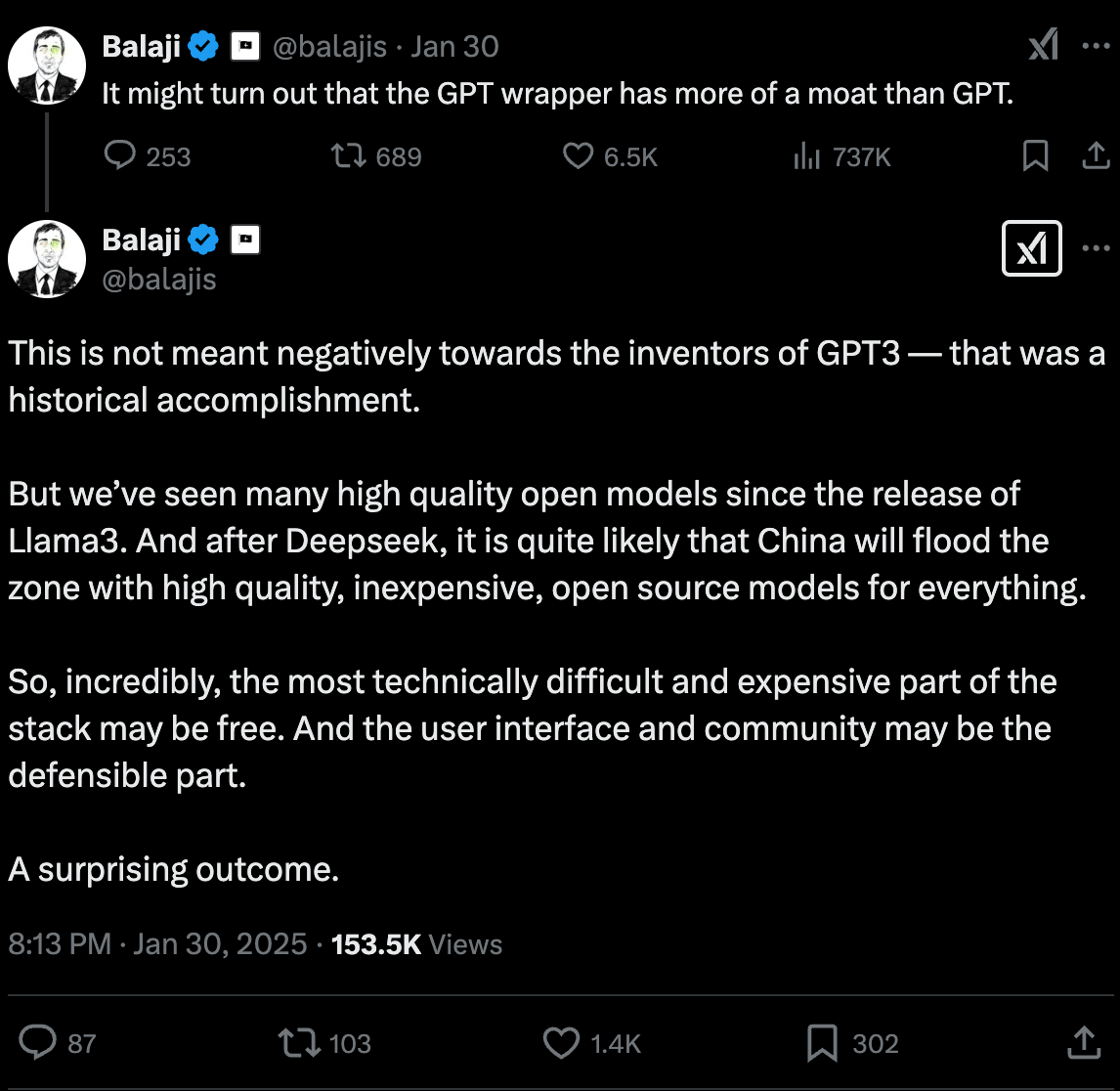The Wrapper Theory: Building Great Products By Combining What Already Exists
Building a unique product/service is hard. If you are dreaming of building one, Aravind Srinivas, the CEO of Perplexity AI, has a simple idea that can help us think clearly: The Wrapper Theory.
The Wrapper Theory says that great products don't have to be built from scratch. Instead, they combine existing technologies, systems, and human needs in creative new ways.
Breaking Down a Wrapper
"Open AI is an Azure and Nvidia wrapper. Venture capital is a wrapper over people who actually have money that they are giving to VCs to invest. Nvidia is like a TSMC wrapper because the fabrication doesn't happen inside Nvidia. Netflix runs on AWS, so it's an AWS wrapper. There are wrappers at all levels of the tech stack - you just don't realize it because they've given you so much value that you don't think about the underlying infrastructure."
— Aravind Srinivas, Founder, Perplexity AI
According to Srinivas, good wrappers have three main parts:
The Foundation: These are the basic ingredients your product/service is built on, like certain technologies or materials.
The Interface: This is how users interact with your product/service. It's about making complex things simple and easy to use.
The Experience: This is how your product/service makes people feel and the real-world benefits it gives them.
Wrappers Are Everywhere
Once you start looking, you'll see wrappers all around you.
Take Razorpay, the payments company. They didn't invent anything new - they just took the messy world of online payments and wrapped it up in a neat package that literally anyone who can read English can use. Or look at Tesla. They combined existing battery tech and software to create a whole new car experience.
But wrappers aren't just for tech companies. While it may initially seem most applicable to digital products, Srinivas argues that the concept of 'wrapping' is a universal lens for analyzing how companies create value across industries.
Consider the beverage industry. Coca-Cola's success is not just about the fizzy brown liquid in the can (the "core product"), but the complex wrapper of brand, packaging, distribution, and experience that the company has meticulously constructed around it over decades. From the iconic glass bottle to the emotions evoked by its advertising, Coca-Cola's wrapper transforms a commodity into an enduring cultural symbol.
The Wrapper Theory also illuminates innovation in service industries. In healthcare, providers like Mayo Clinic in the US, or Manipal Hospitals in India, have garnered attention by wrapping high-quality primary care in an experience tailored to the unique needs of ill patients.
Building a Great Wrapper
So how can entrepreneurs use the Wrapper Theory? The key is to focus on combining things in new ways rather than trying to invent something from zero.
But it's not easy. You need to really understand the technologies you're building on and the needs of your users. You have to be laser-focused on making things simple and delivering real value. And you need to be smart about choosing what to wrap and what to leave out.
For entrepreneurs, the Wrapper Theory provides a structured way to dissect markets and evaluate opportunities. By deconstructing products and services into their core elements and surrounding layers, builders can more effectively identify areas for differentiation and value creation.
But more than just an analytical tool, the Wrapper Theory invites a broader conception of what it means to innovate. It suggests that breakthroughs emerge not only from fundamental technological advances, but also from novel combinations and reconfigurations of existing elements. In this view, entrepreneurship is as much about creative assembly as it is about ex nihilo invention.
The Future of Wrappers
As technology keeps advancing, the opportunities for new wrappers are endless. The most successful companies of tomorrow won't necessarily have the fanciest tech - they'll have the most elegant and impactful wrappers.
For founders, this means developing a new set of skills. They'll need to be great at spotting high-potential building blocks, designing simple interfaces, and creating amazing user experiences. They'll need to be obsessed with speed and simplicity.
The Wrapper Theory changes how we should think about innovation. It tells us that the best solutions are often right in front of us, just waiting to be unwrapped and re-combined.
In a complex world, the Wrapper Theory offers a simple path forward. It reminds us that great products don't have to be complicated - they just have to make life a little bit easier and a little bit better.
And that's a wrap.




